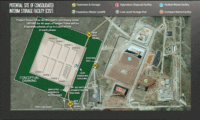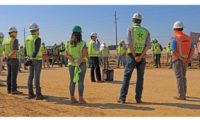Vast amounts of low-level radioactive waste could be transported to a new West Texas disposal site if a two-state commission, largely appointed by Gov. Rick Perry (R), allows it to accept waste shipments from 36 or more states.
The Texas Low-Level Waste Disposal Compact Commission, one of several U.S. compacts set up to encourage state collaboration on low-level waste disposal, consists of six Texas members and two from Vermont to govern disposal in those states. Their waste, now sent to Utah, would be disposed at the Texas site, likely by next spring.
The panel could also decide as early as next month to allow the facility in Andrews County—which has a permitted capacity currently at 2.3-million cu ft—to expand to accept other states’ waste. When completed, it would be owned by the state.
The pending ruling has sparked concern over safety, liability and possible conflicts of interest. Karen Hadden, executive director of an Austin-based environmental group, says the commission has no technical data. “They’re coming at it with ‘How can we make this dump profitable?’ ” she says. “That’s not their charge.”
Waste Control Specialists LLC, Dallas, expects to start construction of the facility in June, says William P. Dornsife, executive vice president of licensing and regulatory affairs. County voters approved a $75-million bond package in 2008 for the $80-million project, though it won by just three votes.
The facility already is licensed to receive nuclear and hazardous waste, including shipments from former U.S. Energy Dept. nuclear weapon manufacturing sites. However, it is now settling some technical deficiencies.
The pending ruling “is an invitation to states from across the U.S. to dump here,” says Hadden. Critics also point to close political ties between Perry and Waste Control owner Harold Simmons. Further, they also say the site is too close to the Ogallala aquifer, one of the largest in the country. “This could be the new Yucca Mountain,” she says.
Dornsife disagrees, saying the facility is to located 15 miles north of the aquifer and will be built on “a compact clay formation with low hydraulic conductivity.” The disposal cell will be about 30 ft belowground with engineered covers. He says the nearest productive groundwater source is at least 700 to 800 ft below.
“The commissioners are having a high-level public debate on this issue,” says a Perry spokeswoman. “The governor expects them to ultimately make a decision that is in the best interest of Texas.”



Post a comment to this article
Report Abusive Comment